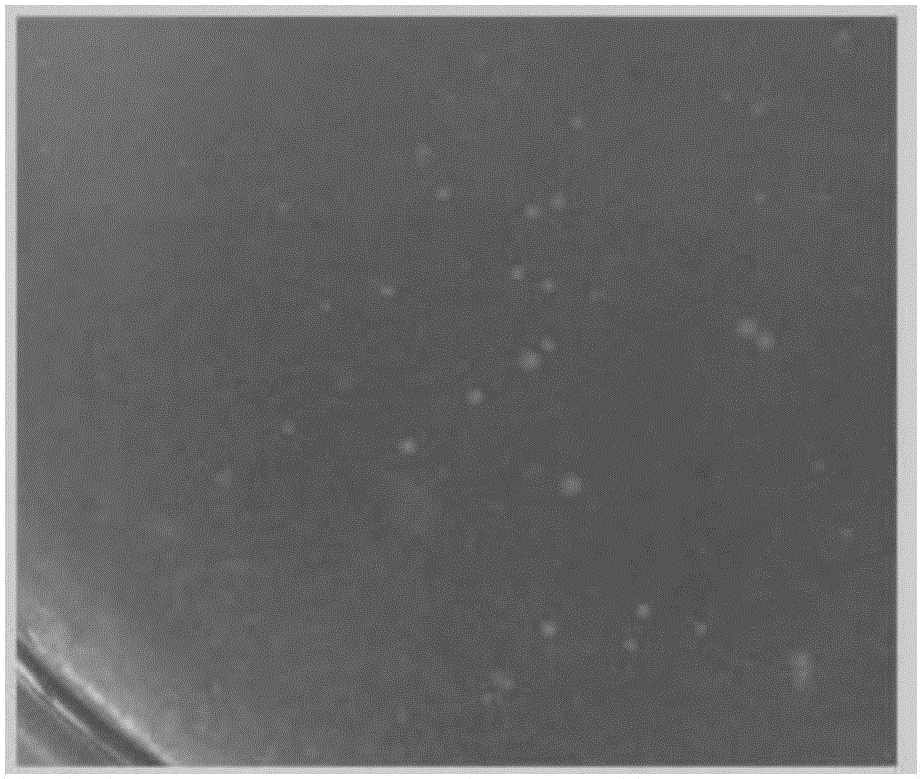Conversion method for two fiber sorangium cellulosum strains
A technology of S. cellulosus and donor bacteria, which is applied in the field of genetic engineering and can solve the problems of time-consuming construction of recombinant plasmids and transformation processes.
- Summary
- Abstract
- Description
- Claims
- Application Information
AI Technical Summary
Problems solved by technology
Method used
Image
Examples
Embodiment 1
[0023] Embodiment 1: the protoplast transformation of S. cellulosus SoceM1 comprises the following steps:
[0024] (1) Preparation of protoplasts: Prepare liquid medium according to the following formula: 8g / L potato starch, 2g / L glucose, 2g / L soybean protein hydrolyzate, 2g / L yeast extract, 8mg / L LEDTA iron sodium, 1g / L MgSO 4 .7H 2 O, 1g / LCaCl 2 , 0.5g / LTris, the solvent is water, adjust the pH to 7.4 with hydrochloric acid. Sterilize at 115°C for 25min. Inoculate Socesia cellulosus SoceM1 into 30ml liquid medium with 2.5% inoculation amount, culture at 30°C and 180rpm until OD595nm is about 0.8, centrifuge at 8000rpm for 10min to obtain the bacteria, wash twice with PBS solution, and then use 14% mannitol Suspend the SoceM1 cells in the solution, then treat the cells with 15% EDTA solution for 30min, wash with PBS, then suspend the cells with 1ml of PBS, add 100μl of 3mg / ml lysozyme at 30°C for 2h, centrifuge at 8000rpm for 10min, and fully wash with 14% mannitol solutio...
Embodiment 2
[0033] Embodiment 2: the three parents of S. cellulosus SoceM6 are combined and transformed, comprising the following steps:
[0034] (1) Construction of the recombinant plasmid: add HindIIII and PstI restriction sites at both ends of the hemoglobin gene vgb gene of Vitella hyaline, use HindIIII and PstI to perform double enzyme digestion on the vgb gene and the broad host vector PLA2917, and connect overnight at 16°C. Transformed into DH5α competent cells, picked a single clone to expand culture, identified by PCR and sent for sequencing.
[0035] (2) Transformation of exogenous plasmids by three-parent combination method: inoculate donor bacteria containing PLA2917-vgb, helper bacteria (in DH5α strain) and SoceM6 recipient bacteria containing plasmid PRK2013 respectively, and the OD of donor bacteria and helper bacteria were inoculated. 0.6, and the OD of the recipient bacteria is about 0.8. The three kinds of bacteria are mixed in the ratio of the total number of cells as d...
PUM
 Login to View More
Login to View More Abstract
Description
Claims
Application Information
 Login to View More
Login to View More - Generate Ideas
- Intellectual Property
- Life Sciences
- Materials
- Tech Scout
- Unparalleled Data Quality
- Higher Quality Content
- 60% Fewer Hallucinations
Browse by: Latest US Patents, China's latest patents, Technical Efficacy Thesaurus, Application Domain, Technology Topic, Popular Technical Reports.
© 2025 PatSnap. All rights reserved.Legal|Privacy policy|Modern Slavery Act Transparency Statement|Sitemap|About US| Contact US: help@patsnap.com



